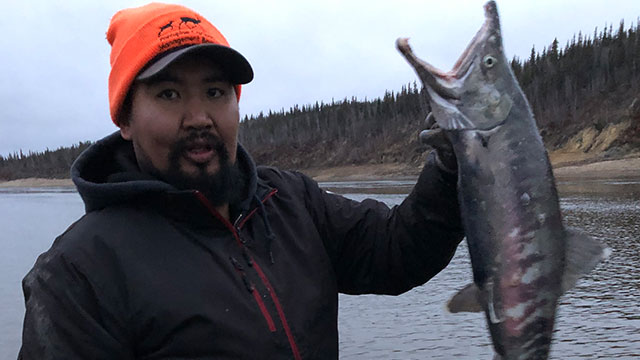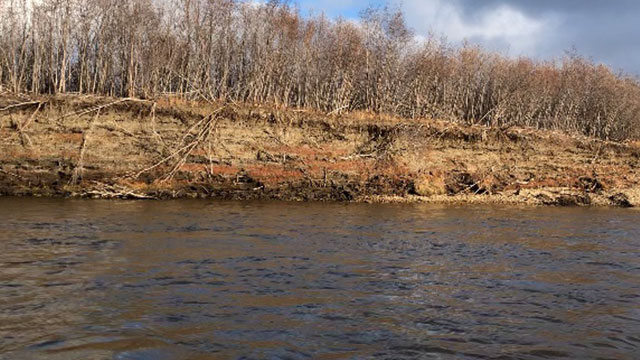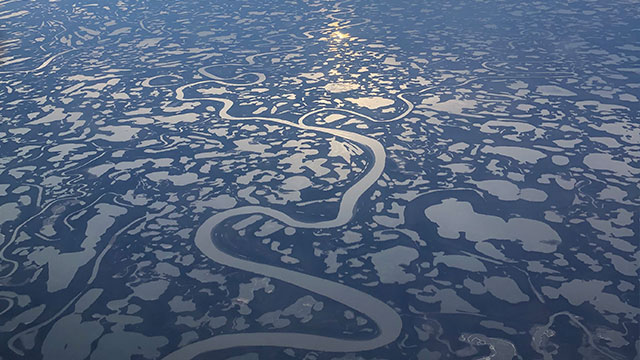The change in the weather has members of the Vuntut Gwitchin First Nation in Old Crow, Yukon on edge, and in fear that climate change is going to irreparably harm their way of life.
Paul Josie is a fisherman and tourism operator.
He’s been travelling the Porcupine River most of his life and is noticing big changes on the land.
“The caribou that are not crossing the porcupine.” Josie tells APTN, “They’re called the porcupine caribou herd because they cross twice a year. We haven’t seen them go back to wintering grounds as they used to in a long time.”
(Fisherman Paul Josie holding a salmon he just pulled from his nets. Photo: Chris MacIntyre/APTN)
In Old Crow, the only way in or out is by air.
Due to the high cost of freight, residents here rely on hunting, trapping, and fishing to provide for themselves and their families.
Walk along the river in Old Crow and you’ll notice a couple of things.
The trees and land are all slumping into the river.
(Permafrost retreats into the earth and trees and land fall into the river systems. Photo: Chris MacIntyre/APTN)
Slumping is when the permafrost retreats further into the earth and the land that was once held together, starts to slide. Slumping into the river systems has the potential to cause devastating situations for the fish species.
There is also an issue with the houses.
Most of the structures in the community are built on stilts. Because of the permafrost, houses cannot be built on the ground. But the heat produced from the houses will eventually melt the ground and the house will start to sink.
Given this dire situation, Vuntut Gwitchin Chief Dana Tizya-Tramm declared that his community of Old Crow was experiencing a climate emergency.
Later, Whitehorse, the capital of the Yukon did the same.
The Yukon is the first of the territories or provinces in Canada to make the declaration.
“Our village of Old Crow is at the bottom of an ancient lake bed,” Tizya-Tramm explained, “The permafrost is what’s holding together our land. If you can fast forward it in your mind, the land is changing and melting right underneath our feet.”
(An ariel shot of the land around Old Crow. Rivers drain and land shifts causing snake like piece of land in the region. Photo: Chris MacIntyre/APTN)
Since the declaration, a conversation has been started between all Yukon First Nations and the federal and territorial governments.
Researchers have been visiting Old Crow to monitor changes and effects of climate change in the community and surrounding area.
Tizya-Tramm says his community will continue to use science while maintaining their traditional ways to adapt to the changing environments.
“We feel these changes. These movements in the web and we move with them,” said Tizya-Tramm.
“We think in generations and now we’re thinking in a generation and people need to know about this.”













